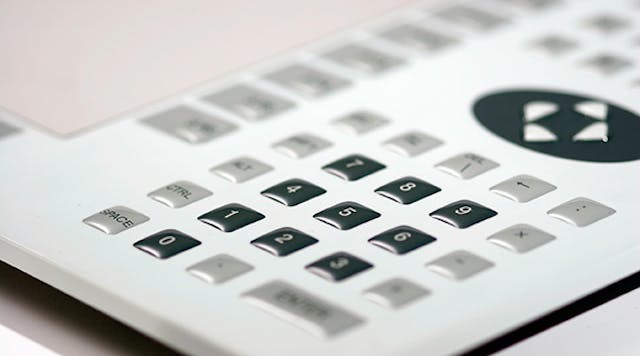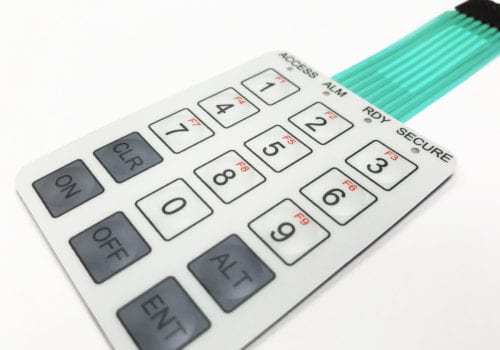Innovations in Membrane Switches for Touch-Sensitive Devices
Recognizing the Importance of Membrane Switches in Interface
Membrane buttons are important parts in the layout of reliable interface, assisting in not only functionality but also enhancing visual allure and customer communication. Their one-of-a-kind attributes, such as resistance to adjustable designs and environmental elements, make them suitable for a diverse selection of applications throughout several industries. As we explore the future patterns and various benefits related to Membrane technology, it comes to be clear that these buttons are greater than just components; they stand for a convergence of innovation and usefulness. The ramifications of this technology on customer experience deserve taking a look at better.
What Are Membrane Buttons?

The spacer layer, which includes adhesive residential or commercial properties, permits the separation of the circuit layer from the overlay, making certain that the button stays in a non-activated state until pushed. When stress is put on the overlay, it compresses the spacer layer, linking the space and completing the circuit in the underlying layer. This layout not just decreases the physical room needed for standard mechanical switches yet likewise enhances the durability of the tool, as Membrane buttons are typically resistant to dirt, wetness, and various other environmental factors.
Frequently found in applications varying from consumer electronic devices to medical tools, Membrane buttons are essential to modern-day technology, giving a effective and user-friendly user interface that aligns with modern layout requirements.
Benefits of Membrane Switches
While countless switch innovations exist, Membrane Switches offer distinctive advantages that make them especially preferable in various applications. One of the main advantages of Membrane switches is their small style, which enables space-saving implementations in gadgets where property is limited. Their thin account not just enhances aesthetic charm however additionally facilitates lightweight building and construction.
An additional considerable benefit is their resistance to ecological variables. Membrane buttons are usually sealed against wetness, dirt, and impurities, making them perfect for use sought after atmospheres, such as clinical tools and commercial devices. This durability extends the lifespan of the switch, decreasing maintenance costs and enhancing reliability.
Furthermore, Membrane buttons can be personalized to satisfy details style needs, including one-of-a-kind graphics and shades that improve customer communication. Their tactile feedback options can also be customized to provide a satisfying user experience. In addition, Membrane buttons are cost-efficient, specifically in high-volume applications, as they can be created effectively.
Applications in Numerous Industries

In the consumer electronics industry, Membrane switches prevail in devices such as microwaves, washing machines, and remote controls. Their responsive comments and aesthetic options boost user experience while supplying a smooth, modern-day appearance. Additionally, auto suppliers make use of Membrane buttons in dashboard controls and infotainment systems, where room is restricted, official website and customer engagement is crucial.
Furthermore, the industrial field leverages Membrane switches in control panels for equipment and tools, enabling for intuitive operation in usually extreme atmospheres. Their resistance to chemicals and moisture makes certain durability and reliability in these applications. Overall, the flexibility of Membrane Switches contributes considerably to their widespread usage, making them important in various technical domains.
Style Considerations for Membrane Switches

When developing Membrane switches, a number of key considerations have to be thought about to make certain optimal capability and user experience. The option of products is critical; choosing long lasting, high-grade substrates can enhance the switch's durability and resistance to environmental aspects such as wetness and temperature level variations.
Second of all, the design of the graphic overlay should prioritize clarity and simplicity of use. Icons and text should be understandable, and the layout ought to assist in user-friendly communication (membrane switches). Furthermore, responsive comments is necessary; including a responsive dome or other devices can boost the customer experience by giving physical verification of activation
An additional crucial aspect is the switch's electrical performance. Developers need to ensure that the conductive traces are properly designed to decrease resistance and stay clear of signal disturbance. This involves evaluating the required actuation pressure and making sure compatibility with the electronic components they will certainly user interface with.

Future Fads in Membrane Technology
As innovation proceeds to advance, Membrane switches are poised to evolve considerably, driven by technologies in products and producing strategies. One arising trend is the incorporation of innovative products, such as versatile substratums and conductive inks, which boost resilience and decrease the general weight of Membrane buttons. These materials not only improve the tactile response but likewise he has a good point permit the style of buttons that can endure harsher environmental conditions.
Additionally, the assimilation of touch-sensitive technologies is transforming traditional Membrane Switches right into more interactive individual interfaces. Capacitive touch sensors embedded within Membrane button panels can give an extra intuitive and receptive customer experience, lining up with the growing demand for sleek, modern-day layouts in customer electronics.
Additionally, advancements in printing strategies, such as electronic and 3D printing, allow quick prototyping and modification of Membrane switches. This flexibility permits makers to respond much more quickly to market needs and consumer choices.
Last but not least, sustainability is ending up being a considerable emphasis, with suppliers checking out environmentally friendly products and processes. As these look these up trends unravel, the future of Membrane modern technology guarantees boosted performance, aesthetic appeal, and ecological responsibility, strengthening their role in innovative individual interfaces throughout different sectors.
Final Thought
In verdict, Membrane Switches stand for an essential component in the design of user interfaces, integrating performance with visual versatility. As innovations in modern technology proceed, the evolution of Membrane buttons is anticipated to further fine-tune individual interfaces, driving development and enhancing functionality in a progressively complicated technological landscape.
Membrane buttons are indispensable parts in the layout of reliable customer interfaces, facilitating not just capability yet additionally improving aesthetic appeal and user communication.Membrane Switches serve as a vital part in numerous customer interfaces, promoting a smooth interaction between customers and digital gadgets.While numerous button modern technologies exist, Membrane Switches deal unique advantages that make them specifically preferable in numerous applications.Additionally, Membrane buttons can be personalized to meet details style requirements, including special graphics and colors that boost individual communication.In final thought, Membrane Switches stand for an important part in the style of customer interfaces, integrating functionality with visual flexibility.